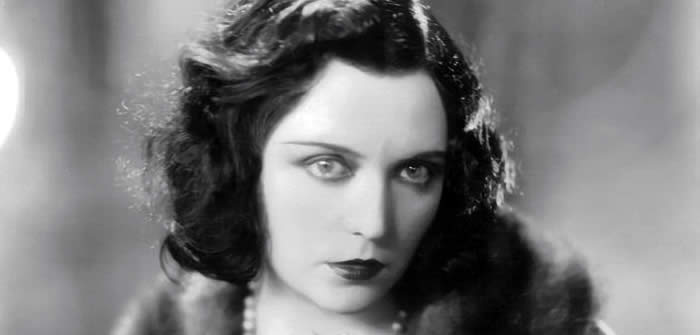As a teenager in the early 1970s, Tony Villecco saw a photo of Polish actress Pola Negri in a book of silent-film stars, and he instantly felt drawn to her. Maybe it was her exotic and beautiful appearance, or maybe it was the hint of smoldering romance in her eyes.
Before long, he’d tracked down her autobiography (which he later learned was ghostwritten and full of, shall we say, elaborations) and even figured out where she lived in San Antonio, Texas. He’d write letters to her and get back an occasional photo or Christmas card from her assistant.
But Negri, whom Villecco calls “one of the most colorful and controversial of the silent-film stars,” continued to fascinate him — even after her death in 1987 at age 90. For more than 20 years, he has planned to write a biography on Negri, collecting photos and stories from those who knew her.
After two decades, the Tunnel-based writer and singer has self-published “Pola Negri: The Hollywood Years,” which is chock-full of stories about her career peak in America from 1922 to 1928.
Even before Paramount Pictures signed her to a contract, Negri had made more than 30 silent films in Europe, many of them directed by top talent like Ernst Lubitsch, Georg Jacoby and Paul Ludwig Stein.
“She was very passionate and very earthy,” Villecco said in an interview last week. “She didn’t care how she looked onscreen — she just want all out. She was very wild, like someone no one had ever seen at the time. When she came to America, Paramount tried to ‘Americanize’ her, and it succeeded to a point. It took away that originality, the spark that she had in her European films.”
When Paramount did not renew her contract in 1928, she claimed she would retire from acting and moved back to Europe. She returned to America for a brief stint in vaudeville and made nine additional films between 1929 and 1938. (She may have been Nazi leader Adolf Hitler’s favorite actress, but she said she never met him.)
Negri ended up back America for good in the early 1940s to escape World War II, becoming a naturalized U.S. citizen in 1951 and moving to Texas with oil heiress Margaret West. She came out of retirement in 1964 to appear in the Walt Disney film “The Moon-Spinners,” which also starred Hayley Mills, and that turned out to be her final film.
Villecco is convinced that her thick Polish accent is what prevented her from gaining a wider acceptance in America.
“I tried to few times to do a full biography going to post-America and Europe, but it was just daunting,” he said. “Most of the stuff would have been destroyed during the war, and she was such a perpetual fabricator that so much of her own book was not true — there were a lot of lies. Speaking to her ghostwriter, he filled in a lot of the parts that were missing.”
Sadly, much of Negri’s silent-film work has been destroyed over the years, because nitrate in the celluloid is particularly flammable or unstable.
“Whenever I go to an old movie theater, I always ask, ‘Where were your films projected from? Do you ever find any reels or any cans?’” Villecco said. “It’s possible that there’s still stuff out there.”
Still, Villecco hopes that his book — which will have a release party Sunday at Roberson Museum and Science Center — will help to keep Negri’s memory alive. Maybe one of the photos in it will inspire someone to be part of the next generation of film historians.
Source: Press Connects

